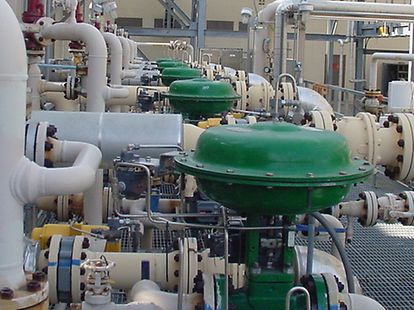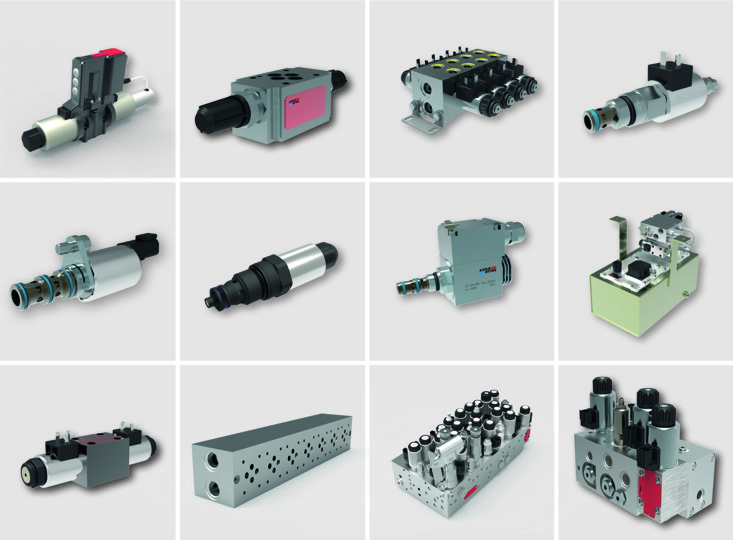Enhancing System Control with High-Performance Control Valves
Enhancing System Control with High-Performance Control Valves
Blog Article
Achieve Seamless Combination and Control With Top Quality Building Automation Controls
In the realm of modern structure administration, the importance of quality building automation controls can not be overemphasized. As modern technology remains to development, the assimilation and control of numerous systems within a building have actually progressed to be more efficient and sophisticated. The smooth operation and surveillance of lights, HVAC, safety and security, and various other structure functions have ended up being critical for enhancing owner comfort, power performance, and general operational effectiveness. The trip towards achieving real integration and control is a complex one, with considerations varying from system compatibility to cybersecurity. Accepting high quality building automation controls is not simply an issue of ease yet a calculated necessary for companies aiming to maximize their facilities' performance and sustainability.

Evolution of Structure Automation Controls
Throughout the previous few years, the development of building automation controls has actually dramatically changed the method buildings are taken care of and run. Originally, constructing automation systems mostly focused on basic features such as controlling air flow, home heating, and air conditioning (HEATING AND COOLING) systems. Nevertheless, as technology advanced, these controls have actually come to be more advanced, allowing for a broader series of building systems to be integrated and handled centrally.
The development of constructing automation controls has actually seen a change in the direction of even more intelligent systems that can adjust to changing problems in real-time. This versatility is important for optimizing energy efficiency and ensuring occupant convenience. In addition, modern-day structure automation controls currently offer functions such as predictive upkeep, remote monitoring, and information analytics, enabling facility managers to make data-driven choices to improve building efficiency.

Benefits of High Quality Integration
The development in structure automation regulates in the direction of even more smart systems has actually underscored the significant advantages of top quality integration in maximizing structure procedures and boosting total performance. This central control likewise offers much better visibility and understandings into structure efficiency, making it possible for proactive maintenance and optimization techniques. Overall, the benefits of quality combination in building automation controls are indisputable, using boosted performance, convenience, and functional efficiency.
Improved Individual Experience and Access
Enhancing user communication with structure automation controls through user-friendly style and boosted accessibility boosts the overall experience for owners and center supervisors alike. By focusing on customer experience, constructing automation systems can come to be more reliable and easy to use. User-friendly interfaces, clear navigation, and adjustable settings encourage customers Get More Information to engage with the controls quickly and successfully.
Availability attributes play an essential function in making sure that all people, consisting of those with disabilities, can utilize the building automation controls with ease. Integrating attributes such as voice commands, tactile buttons, and color-contrasted display screens can improve accessibility and make the controls much more comprehensive.
Moreover, read this article enhanced user experience results in greater customer fulfillment, raised performance, and far better decision-making. Passengers can adjust ecological settings according to their choices, while facility managers can efficiently manage and check building systems - control valves. On the whole, prioritizing customer experience and availability in building automation manages adds to a much more productive and smooth building setting for all stakeholders entailed
Lasting Practices With Automation

Additionally, automation can help with the assimilation of sustainable energy resources such as solar panels or wind turbines into building procedures. Through automation, structures can align with modern sustainability objectives and contribute to a greener future.
Future Trends in Structure Control Solution
One famous pattern shaping the future of structure control systems is the increased combination of Artificial Intelligence (AI) and equipment learning. Additionally, the Net of Points (IoT) is transforming building control systems by attaching gadgets and sensing units to enhance procedures and enhance efficiency.
One more essential fad is the focus on cybersecurity steps to secure against prospective threats to building automation systems. As structures come to be more interconnected, making certain robust cybersecurity procedures will certainly be necessary to protect sensitive data and prevent unapproved access.
In addition, the change towards cloud-based systems is gaining momentum, enabling systematized control and remote accessibility to building systems. This assists in simpler surveillance, upkeep, and updates, enhancing the general efficiency and adaptability of structure control systems. As technology continues to breakthrough, these trends are anticipated to form the future landscape of structure automation controls, driving development and sustainability in the built setting.
Conclusion
To conclude, building automation controls have advanced significantly, using many benefits such as improved customer experience, access, and lasting techniques. Quality combination plays an essential function in achieving seamless control and effective operation of building systems. Future patterns in structure control systems are most likely to concentrate on additional improving automation abilities for boosted energy performance and overall performance. It is essential for building proprietors and operators to focus on the adoption of quality structure automation manages to optimize structure operations and attain lasting sustainability goals.
In the try this website world of modern building management, the relevance of top quality structure automation controls can not be overemphasized. On the whole, the advancement of building automation regulates proceeds to drive development in the structure management sector, using brand-new possibilities for creating smarter and much more sustainable structures.
The advancement in structure automation manages towards more smart systems has underscored the considerable benefits of high quality combination in optimizing structure operations and boosting overall performance. Overall, focusing on customer experience and availability in building automation regulates adds to a much more effective and smooth building setting for all stakeholders involved.
It is necessary for building proprietors and drivers to prioritize the adoption of top quality building automation manages to enhance structure operations and accomplish long-term sustainability goals. - control valves
Report this page